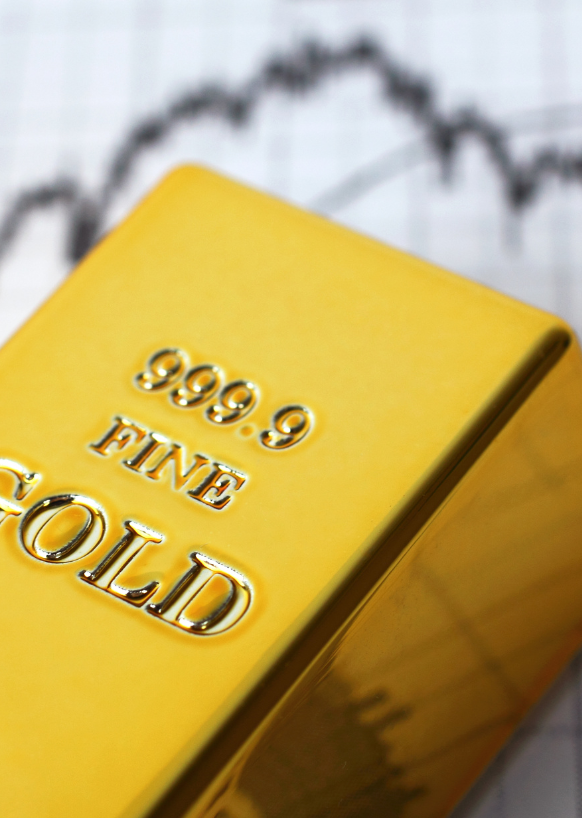What We Pay For Gold - Live Gold Price
Explore our Live Gold Prices! Sell your gold, silver, platinum, and diamonds to Arnold Jewelers located in Largo, Florida – since 1984. If we can pay a premium for something that has a re-sale value above its metal value we will; otherwise, we will pay you 85% of the current market value.
*Arnold Jewelers reserves the right to adjust these prices during a volatile market.*
| Karat | Pay Out Per Gram | Pay Out Per Pennyweight | Pay Out Per Ounce |
|---|---|---|---|
| 10kt | $36.82 | $57.26 | $1,145.15 |
| 14kt | $51.06 | $79.40 | $1,587.97 |
| 16kt | $59.86 | $93.08 | $1,861.57 |
| 18kt | $66.21 | $102.95 | $2,059.01 |
| 22kt | $82.17 | $127.77 | $2,555.42 |
| 24k Bullion | $106.70 | $165.92 | $3,318.30 |
Demystifying Gold: Answers to Your Common Questions
Gold has fascinated and dazzled humanity for centuries. It’s not just a symbol of wealth and luxury; it’s also an intriguing and valuable commodity. But with all its allure, gold can be a bit perplexing, especially if you’re new to the world of precious metals. Let’s unravel some common questions about gold and get to know this shimmering element a little better.
What Is Spot Gold?
Spot gold refers to the current market price of gold, the “spot price.” It’s the price at which gold can be bought or sold for immediate delivery or settlement. This price is influenced by various factors, including supply and demand, economic conditions, geopolitical events, and currency fluctuations. The spot price serves as a benchmark for valuing gold in its various forms, including coins, bars, and jewelry. Spot gold pricing changes regularly, so Live Gold Prices help customers to keep tabs on where the gold market is at.
What Is a Troy Ounce?
A troy ounce is a unit of measurement used for precious metals like gold and silver. It’s slightly heavier than the avoirdupois ounce, which is the common unit of weight in the United States. One troy ounce is equivalent to approximately 31.1035 grams. When buying or selling gold, prices are often quoted in troy ounces, so it’s essential to be aware of this distinction.
What Is Pennyweight?
Pennyweight (abbreviated as “dwt”) is another unit of measurement for precious metals like gold. One troy ounce is equivalent to 20 pennyweights. While troy ounces are more commonly used for larger quantities of gold, pennyweights are often used for smaller, more detailed measurements, especially in the context of jewelry.
Why Are Different Karats Different Prices When Investing in Gold?
Gold purity is measured in karats (not to be confused with carats, used for measuring gemstone weight). Karats denote the proportion of pure gold in a piece of jewelry or a gold alloy. The most common purities are 24K (pure gold), 18K, 14K, and 10K, with 24K being the purest.
The reason different karats are priced differently when investing in gold lies in their purity. Higher-karat gold contains a higher percentage of pure gold, making it more valuable. However, it’s also softer and more prone to wear and tear, which can affect jewelry’s durability. So, while 24K gold is the most valuable per gram, jewelry is often made in lower-karat alloys for durability and cost-efficiency.
Investing in gold is about understanding the balance between purity, value, and practicality. Different karats offer different trade-offs, allowing you to choose based on your preferences and needs.
Gold is more than just a shiny metal; it symbolizes history, wealth, and beauty. Understanding its nuances, from spot prices to troy ounces and karats, empowers you to make informed decisions, whether you’re buying jewelry, investing in gold bars, or simply admiring this timeless treasure.
Why should one be cautious of buying gold below spot price?
Buying gold below its spot price can be appealing, as it seems like a potential opportunity for a bargain. However, it is crucial to exercise caution when encountering such offers. There are a number of reasons why one should approach buying gold below spot price with skepticism.
Firstly, the gold market, like any other industry, is not immune to individuals seeking to take advantage of unsuspecting buyers. If an offer appears too good to be true, it is likely because it is. Those attempting to sell gold below its spot price may very well be peddling counterfeit gold coins or bars, which carry no real value.
Additionally, it is important to consider the concept of the premium associated with the spot price. The spot price represents the current value of the metal itself, but the premium is an essential component of the entire gold supply chain. It covers the costs associated with mining, refining, minting, and retailing, ensuring the viability of the industry and allowing for a profit to be made. Without this premium, the process of extracting gold from the ground and distributing it would not be sustainable, and thus, a functioning market would cease to exist.
Therefore, when encountering gold that is listed below its spot price, it is prudent to default to suspicion. The potential risks involved, such as receiving counterfeit gold or participating in an unsustainable transaction, far outweigh the temporary allure of a lower price. It is crucial to ensure the authenticity and legitimate sourcing of any gold purchase in order to protect one’s investment and avoid potential financial losses. Stay in the know with our Live Gold Price Chart!


